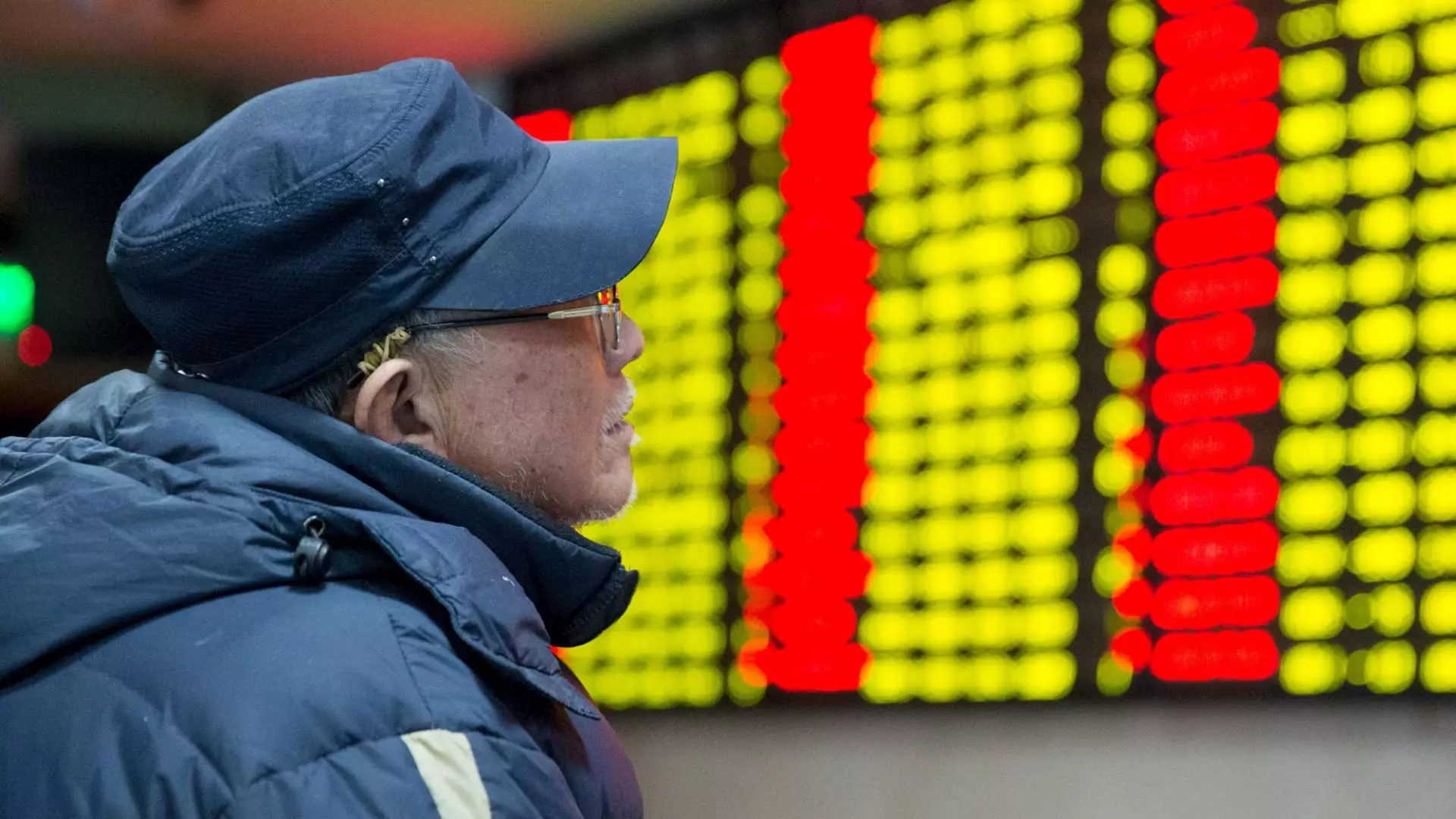In recent weeks, China’s stock market has experienced a remarkable turnaround, capturing the attention of global investors and analysts alike. The CSI 300 index, which tracks major firms in Shanghai and Shenzhen, witnessed a significant rally of over 15% in just one week—the most substantial gain since 2008. This dramatic resurgence presents a fascinating case study in market dynamics, investment strategies, and the impact of government policy changes. While this rally has evoked optimism, it also necessitates careful scrutiny of the underlying trends driving this newfound enthusiasm.
Several pivotal factors have contributed to the resurgence of Chinese stocks. Central to this revival is the Chinese government’s commitment to stimulate the economy and bolster stock market performance. Recent comments from the People’s Bank of China (PBOC) Governor Pan Gongsheng, which included announcements of rate cuts, have stirred investor interests. Furthermore, a high-level meeting convened by President Xi Jinping echoed these sentiments by emphasizing the necessity to counter the real estate slump and adopt supportive fiscal and monetary policies.
This multifaceted approach has altered market sentiment markedly. Hedge funds and investment strategists, previously wary of China’s economic landscape due to contracting growth and problematic real estate developments, have begun to reassess their positions. For instance, JPMorgan’s chief China equity strategist Wendy Liu highlighted the potential for quality businesses to rebound earlier than broader indices, signaling a changing mindset in investment strategies.
As the market began to shift, investment firms started recommending select stocks that appeared undervalued amidst the volatility. JPMorgan surfaced three particular stocks, including Tsingtao Brewery and machinery manufacturer Zhejiang Dingli, as attractive opportunities for gains in the short term. Their analysis suggests that companies trading at low valuations may indeed outperform in the coming quarters as market sentiment stabilizes.
Additionally, other firms like Bernstein are advocating for a tactical approach, urging investors to look for stocks with robust earnings momentum while waiting for signs of broader economic rebound. Notably, Tal Education and Seres, an electric vehicle manufacturer, have been spotlighted for their strong performance metrics. Such targeted stock selection reflects a strategic shift away from broad market bets toward a more nuanced understanding of company fundamentals.
Prominent investors such as hedge fund billionaire David Tepper have also pivoted towards Chinese equities, dismissing concerns regarding potential U.S. tariffs. Tepper’s perspective reinforces the notion that Chinese stocks currently present an attractive risk-reward scenario, particularly when juxtaposed against elevated valuations in U.S. markets. The preference for investments with lower price-to-earnings ratios yet robust growth trajectories is a testament to shifting priorities among institutional investors.
The behavior of mutual funds further underscores this pivot. Recent data presented by Goldman Sachs indicates a slight recovery in hedge fund allocations toward Chinese stocks, marking the highest single-day purchases since early 2021. This renewed interest paints a picture of cautious optimism among international investors, albeit tempered by memories of sluggish economic signals and geopolitical tensions between the U.S. and China.
Despite the encouraging uptick in market performance, analysts caution against readjusting expectations too quickly. The path to sustained growth remains fraught with challenges, including the need for the Chinese government to formalize fiscal policy changes fully. Moreover, lingering apprehensions regarding the real estate sector, high levels of corporate debt, and concerns about the regulatory environment can temper investor enthusiasm.
Furthermore, the characteristic volatility of the mainland Chinese stock market highlights the precarious nature of such rallies. Retail investors dominate trading activity, introducing a significant degree of unpredictability into the market dynamics. As Li Dongfang, a finance blogger in Beijing, aptly pointed out, the Chinese stock market historically responds to shifts in policy, but consolidating after gains often requires time and patience.
China’s recent stock market upswing presents a multifaceted scenario for investors, characterized by a dramatic reversal of fortunes amid concerted government action to stimulate the economy. While excitement reigns in the short term, a prudent approach towards stock selection and risk management remains paramount. The landscape is evolving, and investors must navigate these changes thoughtfully, balancing optimism with a grounded understanding of the economic realities at play. Only time will tell if the current revival in China’s stock market will lead to sustained growth, but its recent momentum undoubtedly warrants attention and analysis as the global financial landscape evolves.

